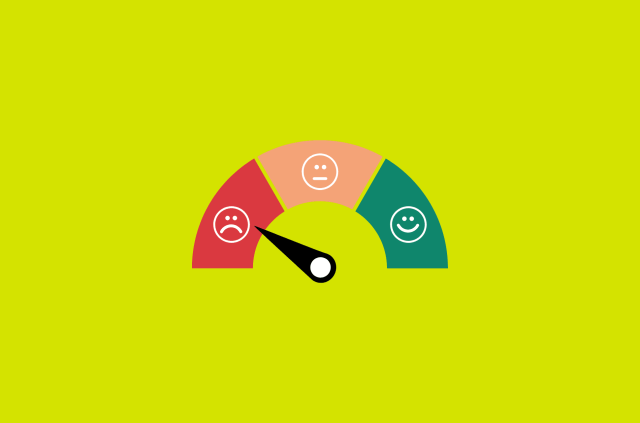In the last few years, fast-fashion sites like Boohoo, Cider, Rihoas, and Shein have grown in popularity for selling trendy and designer-inspired clothes at affordable prices—and many others have followed suit.
But for consumers encountering a fast-fashion brand for the first time, the deals can seem too good to be true. How do you know if that 20 USD dress will arrive looking like the picture? Or even arrive at all?
And they’re right to question; the scams are out there. Here are a few tips before you plonk down your hard-earned cash.
What are common fast fashion website scams?
Here are some common tactics scammers use to steal from unsuspecting consumers looking to purchase fast fashion. It’s important to note that some scams do not actually take place on the fast fashion site itself but leverage the name of a well-known fast fashion site to carry out the scam.
Impersonation or fake websites
After Shein's huge success in the U.S. market, several fake websites have begun to appear, attempting to impersonate the brand. One example was sheingonline.shop. In an effort to make their website seem more legitimate, Sheingonline copied the layout of the real Shein site and used a logo that resembles the official Shein brand.

Undelivered items
The most straightforward scam is to simply set up a site, accept purchases, and not deliver anything. The risks of buying an item you can’t touch or see in person has existed since, well, even pre-internet. If a site seems dodgy or prices too good to be true, best to stay away.
Gift card and rewards scams
Two years ago, a trend seemed to emerge, involving supposedly disgruntled employees from brands like Shein, Lululemon, Sephora, and Zara sharing company secrets. But all was not as it seemed. These individuals were just trying to get users to engage with the brands (likely for a commission).


In the video or photo series (above), the "former" employee shares a website for fans of the brand to get gift cards or credits to shop at the store. To obtain the gift cards, users must complete daily tasks, like playing games on various websites. Each task gets them closer to obtaining their gift card, and after they’ve finished all tasks, they’ll have to share personal information about themselves to redeem their rewards.

Even though the scam emerged almost two years ago, videos from accounts touting these gift card websites continue circulating on TikTok, which can be worrying.
Phishing scams
Phishing scams can occur in multiple ways via the world’s passion for fast fashion. One is on fake websites, where customers could divulge sensitive information about themselves, such as credit card details, usernames, and passwords, when attempting to purchase.
Another way for phishing scams to take place is when a scammer sends emails or messages that appear to be from well-known fast fashion brands, asking customers to confirm their account information or update payment details through a provided link. Clicking on these links directs the customer to a fake website designed to steal their information. Last year, Shein users started receiving phishing emails asking them to click on a link to receive a mystery box.

Buy now, pay later scams
In this scam, a legitimate fast-fashion brand could unknowingly partner with an untrustworthy buy now, pay later (BNPL) company that allows customers to purchase and pay for items through installments. Customers enroll in the program believing it’s legitimate and that they're settled once they’ve paid off their installment. Instead, they continue receiving monthly credit or debit card charges without authorization.
According to cybersecurity company Sift, another way this scam can manifest is when a scammer takes over a legitimate BNPL account and purchases things through it. The scam, also known as account takeover fraud, continues until the BNPL account holder checks their credit or debit account and finds their funds gone.
No refund or dodgy refund practices
Scammers on fast-fashion websites may not honor return policies, making it highly challenging for customers to return items. This leaves customers out of their money and dissatisfied with their purchases.
How to identify a fake or suspicious fast fashion website
While these scams can seem frightening, it’s essential to note that it’s also easy to protect yourself from falling for them on these websites.
1. Be cautious of incredibly deep discounts
Scammers often attract victims with extremely low prices, sometimes marketing themselves as having clearance or closing down sales. If you find stores selling items at prices that seem too good to be true, they probably are. To protect yourself, be sure to compare prices where possible. You can also take an extra step by doing a reverse image search of an item to see if the website you're on is using images from another website.
2. Images, logos, and other visual elements on the website look of
Fraudulent sites often use stolen images or low-quality visuals to deceive people into thinking the site is real or connected to a legitimate one. These images are typically taken from genuine websites through screenshots or low-quality downloads. Some of the biggest giveaways that images could be stolen from a different site are when the image is blurry or pixelated or when some product images don’t have a coherent theme to them.
3. Fake or overly positive reviews
Beware of suspicious websites with fake or overly positive reviews meant to deceive consumers. It's important to verify reviews on independent sites like Trustpilot or even check social media platforms like Reddit where you might see more honest reviews and experiences. Look out for reviews that got into details about missing orders, fake products, or even difficult return processes. If a fast fashion site has no reviews, try searching for the company's name as it appears on its About Us page or check if the address listed on the website can be found on Google Maps.
4. Unusual payment methods
When shopping online, it's best to avoid retailers that only accept uncommon payment methods such as wire transfers, bitcoin, or gift cards. Instead, choose well-established and secure payment options such as credit cards or PayPal, especially if paying by credit card. These methods are safer and make it easier to get a refund if any issues arise.
You might want to consider using a VPN when shopping online, too. While a VPN won't prevent you from being scammed, it can help protect your data from scammers who might want to track your internet activity or even steal your data while you’re on a legitimate website. A VPN is also especially useful if you’re making transactions over public Wi-Fi that might be unprotected.
5. Fake company information
It's important to research thoroughly when considering a purchase from an e-shop without third-party reviews. Investigate the site’s physical address; it could offer clues. Be cautious if the physical address is linked to multiple businesses or seems to be intentionally left vague. Googling the company’s phone number and address can uncover if multiple e-shops use the same info and provide insight into its other lines of businesses.
6. Inconsistent information
Beware of inconsistencies in a fast fashion brand’s claims. For example, if a shop says its products are made and shipped domestically, but the shipping details include international origins, it might be worth questioning why or how this came to be. While it’s not necessarily an indication that the fast fashion company is a scam, it does indicate that the company isn’t being entirely honest about its practices.
What are greenwashing scams?
Greenwashing scams involve companies misleading consumers into believing their products, services, or practices are environmentally friendly when they are not. This type of scam has also grown in popularity over time as more consumers become more aware of environmental issues.
Why is greenwashing bad?
Greenwashing scams may not result in consumers losing their money like typical scams, but they’re harmful because customers make purchases under false pretenses—thinking the product is somehow environmentally friendlier than it really is.
What to do if you fall victim to a fast fashion site scam
If you’ve purchased from a fraudulent fast fashion site and encountered problems such as not receiving your item, receiving the wrong product, or getting a substandard item, you might not know what you can do to get a refund. Below, we’ve highlighted some of the general things you can do to try and get your money back:
Request a refund
If you’ve paid using your credit card, immediately file a chargeback request with your credit card company. The process is typically straightforward, and you’ll receive a refund within a specific timeframe. As such, using a credit card for online shopping offers several advantages that can enhance security and financial protection.
If you’ve paid using PayPal, you must request a refund directly from the seller. If the seller refuses to accept or respond to the dispute within 180 days of payment, you can open a ticket with the PayPal Resolution Center to get your money back.
Keep evidence
If you’ve fallen victim to a scam on a fast fashion website, it’s crucial to gather and preserve all relevant evidence to support your case. Start by saving all emails and communications with the seller, including order confirmations, receipts, and any correspondence regarding the issue. Take screenshots of the product listing, mainly if it contains misleading information or photos. Document the details of your transaction, including the date, amount paid, and the payment method used. If you received an item, keep it as it may be required for inspection.
Compile any additional proof, such as tracking numbers and delivery receipts, and take photographs of the item you received if it significantly differs from what was advertised. This comprehensive collection of evidence will be invaluable when filing a dispute with your bank, credit card company, or payment platform to request a refund.
Report the website
It’s helpful to report the website to the appropriate authorities and organizations. In the U.S., you can file a report with the Federal Trade Commission or the Better Business Bureau. In the UK, Action Fraud is the national reporting center for fraud and cybercrime. Providing detailed information about the scam can help these organizations take action against the fraudulent site and prevent others from falling victim. Consider sharing your experience on review sites like Google or Trustpilot, as well as forums to warn other potential customers.
FAQ: About fake shopping sites
How can I tell if a website is selling fake items?
- Check the domain name: Fake websites often have domain names that are similar to those of legitimate websites but with slight misspellings or extra words. For example, a fake website selling Nike shoes might have the domain name "nikeoutletstore.com.cn" instead of "nike.com."
- Look for a padlock symbol: When you're on a website that uses HTTPS, you'll see a padlock icon in the address bar. This means that the website's connection is encrypted and your data is protected. However, scammers can also use HTTPS certificates, so it's not a guarantee that a website is legitimate.
- Check the website's content: Fake websites often have poorly written content, with grammatical errors and typos. They may also use stock photos or images that are copied from other websites.
- Be wary of deals that seem too good to be true: If a website is selling brand-name items at significantly lower prices than other retailers, it's likely that the items are fake.
- Read reviews of the website: If you're unsure about a website, do some research to see if other people have had negative experiences with it. You can also check websites like Trustpilot and Scamadviser to see if there are any reports of the website being fraudulent.
If you have received an item that you suspect is fake, there are a few things you can do:
- Contact the seller: Let the seller know that you believe the item is fake and request a refund. If the seller is unwilling to cooperate, you may need to file a dispute with your payment processor (e.g., credit card company, PayPal).
- Report the seller to the authorities: You can report the seller to your local consumer protection agency or to the authorities in the country where the seller is located.
- Contact the brand of the item you bought: Many brands have anti-counterfeiting programs and may be able to help you determine if the item is fake. They may also be able to provide you with information on how to report the counterfeit item to the authorities.
What can I do if I ordered something from a fake website?
- Contact your bank or credit card company to dispute the charge. This may help you to get your money back.
- Report the website to the authorities. You can report the website to the Federal Trade Commission (FTC) in the United States or to the appropriate authorities in your country. This helps to warn other people about the scam and may lead to an investigation.
- Contact the brand of the item you bought. If you bought a fake brand-name item, you can contact the brand's customer service department. They may be able to help you to get a refund or to report the website to the proper authorities.
- Keep all of the evidence: This includes your order confirmation email, any correspondence with the website, and any photos or videos of the item you received. This evidence will be helpful if you need to file a dispute with your bank or credit card company or if you report the scam to the authorities.
- Change your passwords: If you used the same password for the fake website as you use for other websites, change your passwords immediately. This will help to protect your other accounts from being compromised.
- Monitor your credit report for fraudulent activity: It's a good idea to check your credit report regularly for any unauthorized charges. You can get a free copy of your credit report from each of the three major credit bureaus once per year at annualcreditreport.com.
Here are some additional tips:
If you think you may have been a victim of a fake website scam, it's important to act quickly. The sooner you report the scam, the more likely you are to get your money back.
What are the different kinds of fake websites?
- Fake online stores: These websites sell counterfeit goods, such as clothing, electronics, and pharmaceuticals. They often have low prices and attractive deals, but the products they sell are often poorly made and may not be safe to use.
- Fake news websites: These websites publish false or misleading stories that are designed to look like real news articles. They may be used to spread propaganda or to deceive people into clicking on ads.
- Phishing websites: These websites are designed to trick people into revealing their personal information, such as their credit card numbers or passwords. They often look like legitimate websites, such as bank websites or social media websites.
- Malicious websites: These websites are designed to infect your computer with malware, such as viruses or spyware. They may do this by tricking you into downloading a malicious file or by exploiting a vulnerability in your web browser.
Fake websites can be very convincing, so it is important to be aware of the signs and take precautions to protect yourself. If you think you may have visited a fake website, it’s important to take steps to protect yourself. Change your passwords for any accounts that you may have entered your information on. You should also scan your device for malware using an antivirus program.
If you have been scammed by a fake website, you can report it to the authorities and to the brand of the item you bought. You may also be able to get a refund from your credit card company.
Take the first step to protect yourself online. Try ExpressVPN risk-free.
Get ExpressVPN














